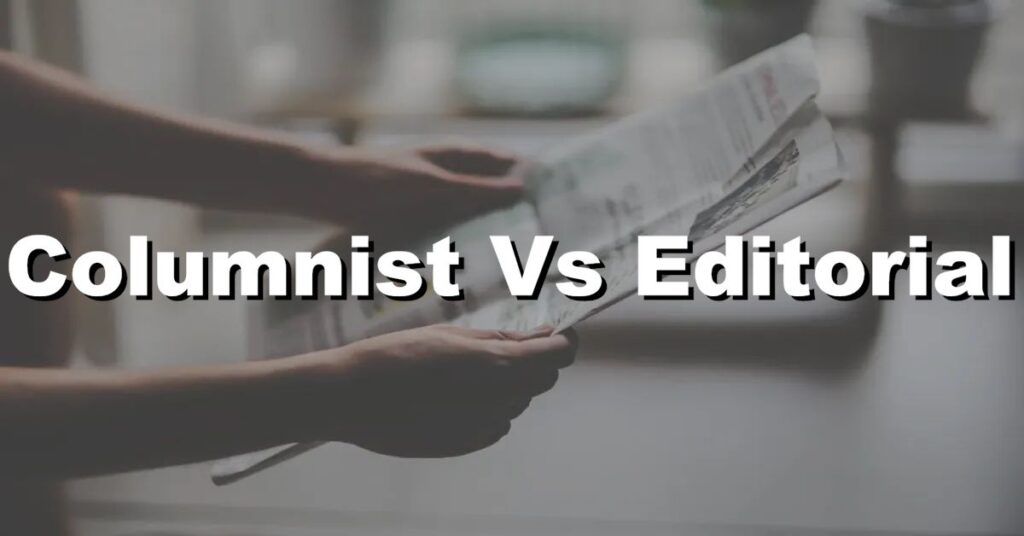In the world of media, two terms that are often used interchangeably are “columnist” and “editorial.” However, these two roles are distinct and have different responsibilities.
In this blog post, we will explore the differences between a columnist and an editorial and discuss the unique challenges each role presents.
Defining a Columnist:
A columnist is a writer who specializes in expressing their opinions, analysis, and commentary on various topics in a regular column within a newspaper, magazine, or online publication.
Unlike news reporters who strive for objectivity, columnists are encouraged to share their personal perspectives and engage readers through their unique voice and writing style. Columnists often develop expertise in specific subjects and use their columns to offer insights, critique, or provoke thoughtful discussions on relevant issues.
Defining an Editorial:
An editorial is a piece of writing that represents the collective opinion or viewpoint of a publication’s editorial board or editorial team. Editorials typically appear in newspapers, magazines, or online platforms and provide commentary on current events, public policies, or societal matters.
They serve as a platform for the publication to express its stance on important issues and influence public opinion through persuasive arguments and analysis.
Differences in Writing Styles and Formats:
Columnists have more freedom in their writing styles, allowing them to adopt a more personal and subjective approach. They can share anecdotes, draw from personal experiences, and employ creative storytelling techniques to convey their viewpoints. Editorials, on the other hand, follow a more structured and formal writing style.
They aim to present a cohesive and persuasive argument supported by evidence, logical reasoning, and analysis. Editorials often follow a specific format, including an introduction, body paragraphs, and a conclusion.
Job Roles and Responsibilities:
Columnists are responsible for researching, developing, and writing their columns on a regular basis. They need to stay well-informed about current events and relevant topics within their area of expertise.
Columnists should engage with readers, respond to feedback, and foster discussions through their writing. They have the opportunity to shape public discourse and offer unique perspectives that contribute to the diversity of opinions in media.
Editorials are crafted by an editorial team or board within a publication. Their role is to collectively assess current events, policies, or societal issues and formulate a unified opinion or stance on behalf of the publication. Editors collaborate to develop the editorial’s content, ensure its accuracy and coherence, and uphold the publication’s editorial standards and values.
How Columnists and Editorials Influence Public Opinion:
Columnists and editorials play a significant role in shaping public opinion by offering analysis, commentary, and arguments on important topics. Columnists provide a platform for diverse perspectives, engaging readers and stimulating critical thinking. Their unique voices and writing styles can resonate with readers, challenge established beliefs, or prompt discussions.
Editorials, representing the publication’s official stance, carry institutional weight and influence. They contribute to public discourse, guide readers’ understanding of complex issues, and may advocate for specific policies or societal changes. Editorials often aim to persuade readers, provide a moral or intellectual compass, and shape public opinion through logical arguments and thoughtful analysis.
Both columnists and editorials contribute to the broader media landscape by offering alternative viewpoints, encouraging debate, and providing readers with a range of perspectives to consider when forming their own opinions.
Conclusion
In conclusion, while both columnists and editorials offer opinions on current events, they differ in their format and purpose. Columnists write individual articles that are often focused on a specific topic or theme, while editorials are written by a group of writers and express the opinion of the publication as a whole.
Both columns and editorials are important for stimulating discussion and debate, but they serve different purposes within the media landscape.

